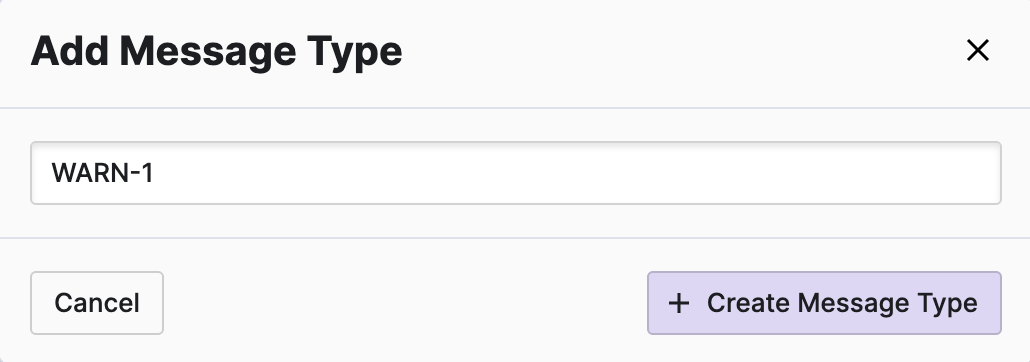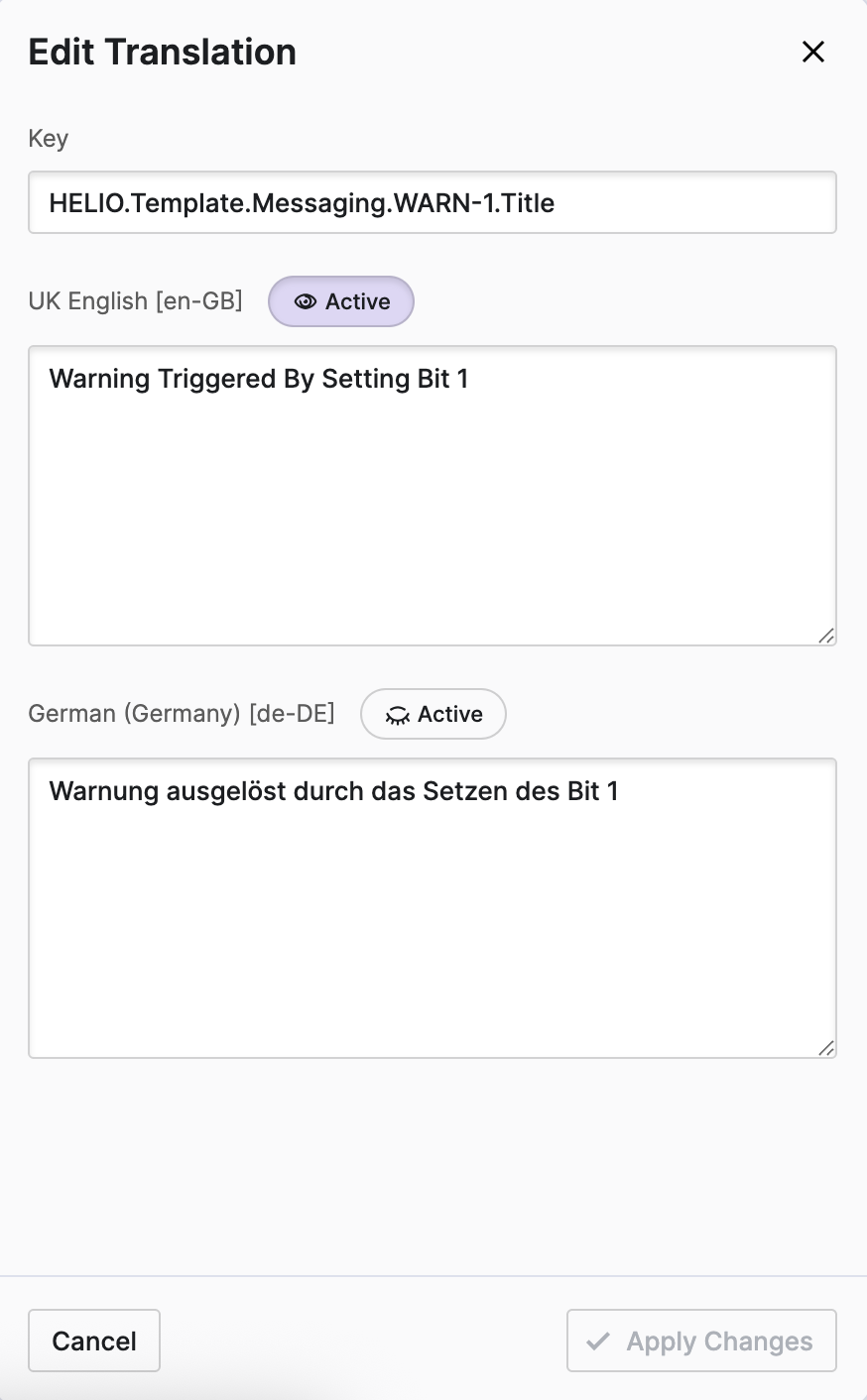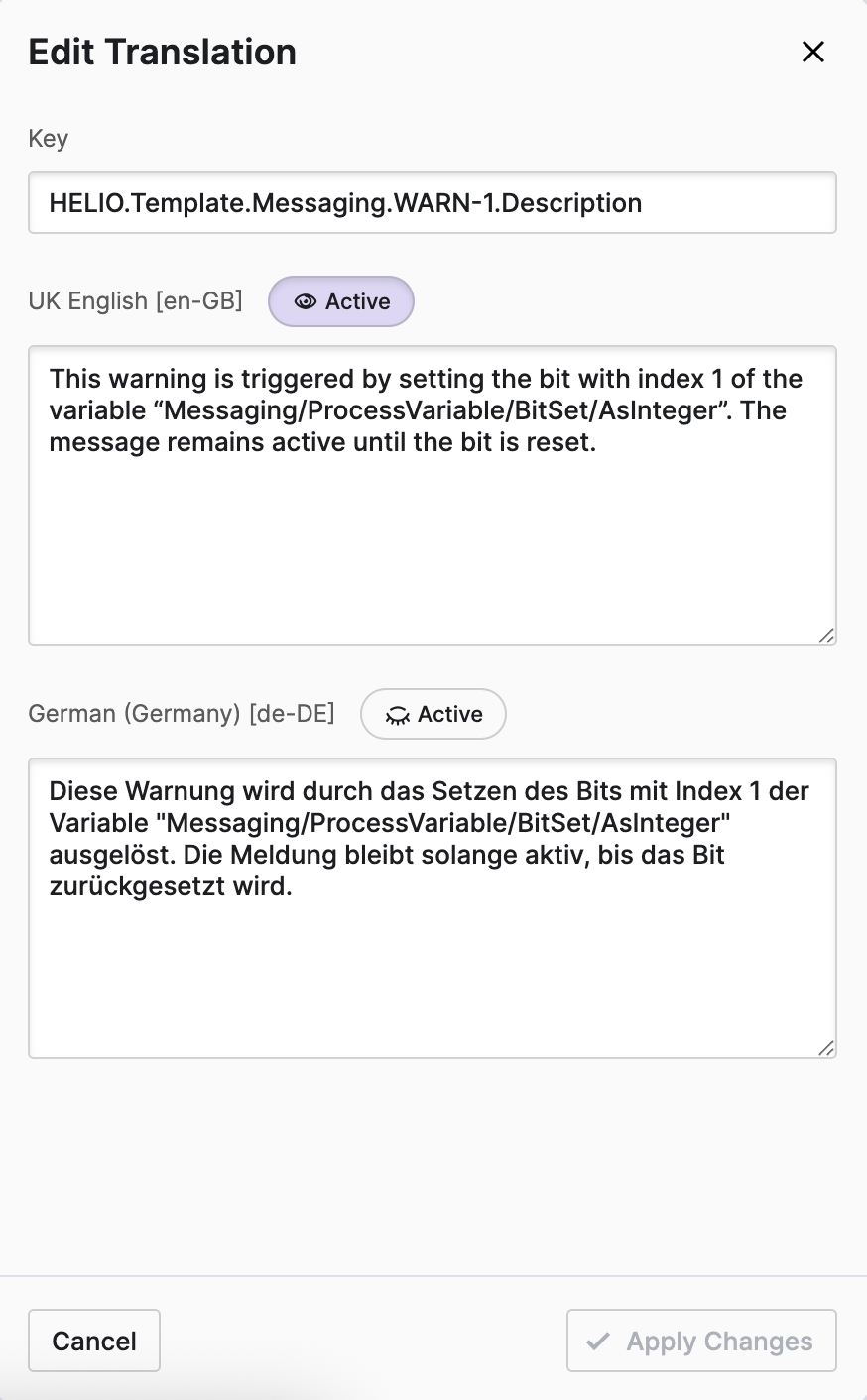Define A Warn Message
In the previous step we learned that Error messages are the highest
level of escalation. Warn messages are the next level down.
Their main purpose, therefore, is to alert operators so that they can resolve issues before they ever escalate to an error.
In this step, we're going to define an example warning message that alerts operators when a temperature has reached a threshold value.
- Add New Message Type
Click Add Type within the Message Types View:
- Choose a Unique Code
- Choose the Right
Level
- Choose a Descriptive
Title
- Provide a Clear
Description
Always remember that warnings will occur in or cause stressful situations. With this in mind:
- Describe the cause of warning clearly and precisely.
- Be sure to keep it brief, using only the most essential words.
- Don't add unnecessary complexity by apologizing. Apologizing is
human. But it can be annoying, especially if it happens repeatedly.
Perhaps well-intentioned statements such as
Sorry!are usually unnecessary since they will distract your operators from finding the solution.
- Offer a Structured
Solution
Mission accomplished!
Wonderful, we've got our warning message type defined. So let's go ahead define a message of the final level that we've been missing so far.






